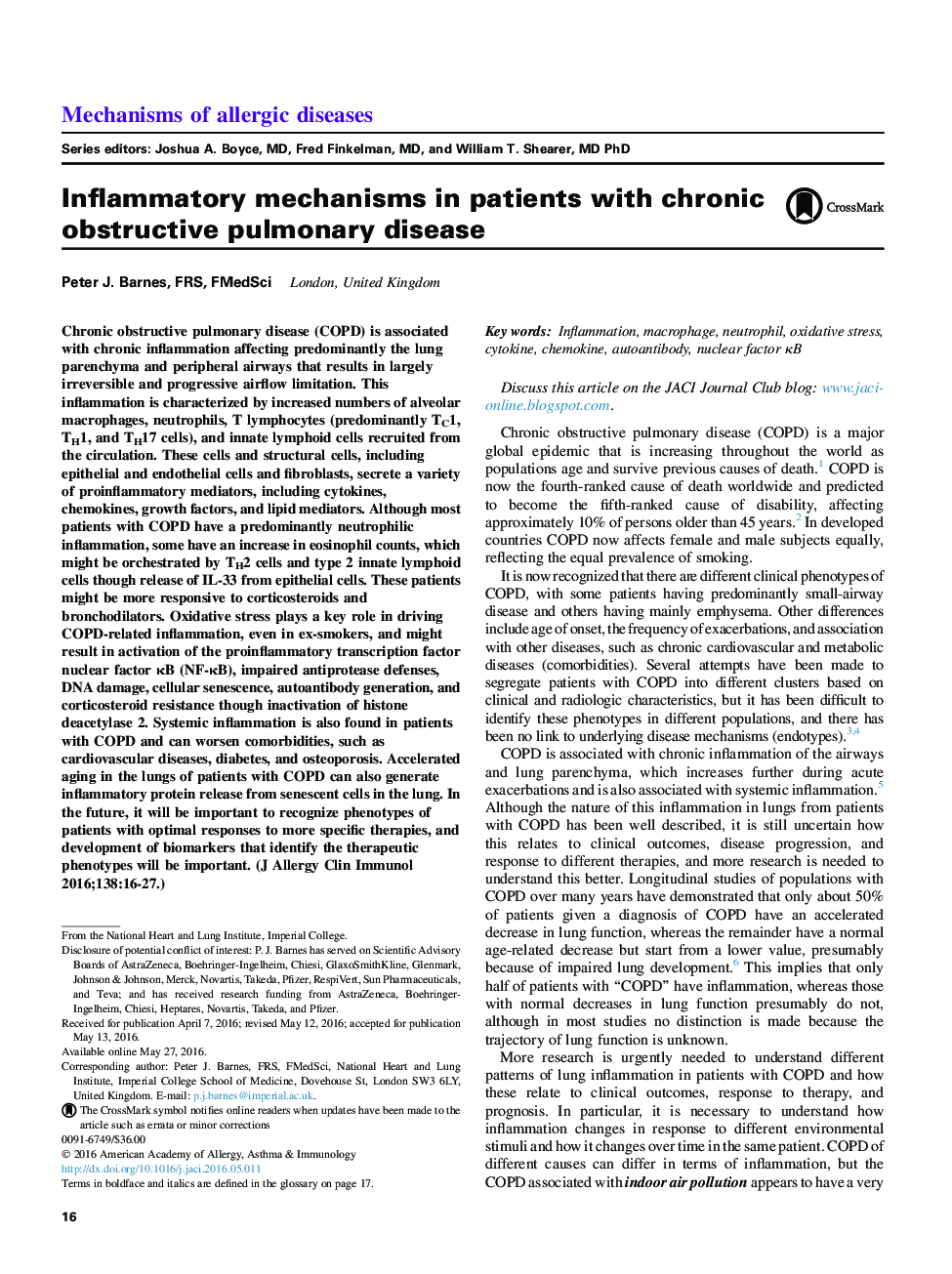| Article ID | Journal | Published Year | Pages | File Type |
|---|---|---|---|---|
| 6062271 | Journal of Allergy and Clinical Immunology | 2016 | 12 Pages |
Abstract
Chronic obstructive pulmonary disease (COPD) is associated with chronic inflammation affecting predominantly the lung parenchyma and peripheral airways that results in largely irreversible and progressive airflow limitation. This inflammation is characterized by increased numbers of alveolar macrophages, neutrophils, T lymphocytes (predominantly TC1, TH1, and TH17 cells), and innate lymphoid cells recruited from the circulation. These cells and structural cells, including epithelial and endothelial cells and fibroblasts, secrete a variety of proinflammatory mediators, including cytokines, chemokines, growth factors, and lipid mediators. Although most patients with COPD have a predominantly neutrophilic inflammation, some have an increase in eosinophil counts, which might be orchestrated by TH2 cells and type 2 innate lymphoid cells though release of IL-33 from epithelial cells. These patients might be more responsive to corticosteroids and bronchodilators. Oxidative stress plays a key role in driving COPD-related inflammation, even in ex-smokers, and might result in activation of the proinflammatory transcription factor nuclear factor κB (NF-κB), impaired antiprotease defenses, DNA damage, cellular senescence, autoantibody generation, and corticosteroid resistance though inactivation of histone deacetylase 2. Systemic inflammation is also found in patients with COPD and can worsen comorbidities, such as cardiovascular diseases, diabetes, and osteoporosis. Accelerated aging in the lungs of patients with COPD can also generate inflammatory protein release from senescent cells in the lung. In the future, it will be important to recognize phenotypes of patients with optimal responses to more specific therapies, and development of biomarkers that identify the therapeutic phenotypes will be important.
Keywords
ILC2MMPILCBALEGFRHDACASCNrf2ROSAutoantibodyinflammationCOPDChronic obstructive pulmonary diseaseOxidative stressSODinnate lymphoid cellSuperoxide dismutaseCytokineVascular endothelial growth factorVascular Endothelial Growth Factor (VEGF)nuclear factor κBbronchoalveolar lavageLeukotrienematrix metalloproteinaseMacrophageneutrophiltype 2 innate lymphoid cellhistone deacetylaseapoptosis-associated speck-like protein containing a CARDprostaglandinChemokineReactive oxygen speciesEpithelial growth factor receptor
Related Topics
Life Sciences
Immunology and Microbiology
Immunology
Authors
Peter J. FRS, FMedSci,
